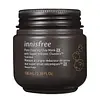What's inside
What's inside
 Key Ingredients
Key Ingredients

 Benefits
Benefits

 Concerns
Concerns

 Ingredients Side-by-side
Ingredients Side-by-side

Water
Skin ConditioningKaolin
AbrasiveMoroccan Lava Clay
AbrasiveMagnesium Aluminum Silicate
AbsorbentAlcohol Denat.
AntimicrobialCamellia Sinensis Leaf
PerfumingPEG-40 Hydrogenated Castor Oil
EmulsifyingPumice
AbrasiveArgania Spinosa Shell Powder
AbrasivePhenoxyethanol
PreservativeXanthan Gum
EmulsifyingParfum
MaskingCharcoal Powder
AbrasiveEthylhexylglycerin
Skin ConditioningCaprylhydroxamic Acid
Argania Spinosa Kernel Oil
EmollientButyrospermum Parkii Butter
Skin ConditioningLimonene
PerfumingLinalool
PerfumingMethylpropanediol
SolventAloe Barbadensis Leaf Juice Powder
Skin ConditioningMenthol
MaskingDisodium EDTA
Tetrasodium Pyrophosphate
BufferingMelaleuca Alternifolia Leaf Oil
AntioxidantEucalyptus Globulus Leaf Oil
PerfumingCitric Acid
BufferingMenthoxypropanediol
MaskingCitral
PerfumingGeraniol
PerfumingCoumarin
PerfumingCaramel
Cosmetic ColorantWater, Kaolin, Moroccan Lava Clay, Magnesium Aluminum Silicate, Alcohol Denat., Camellia Sinensis Leaf, PEG-40 Hydrogenated Castor Oil, Pumice, Argania Spinosa Shell Powder, Phenoxyethanol, Xanthan Gum, Parfum, Charcoal Powder, Ethylhexylglycerin, Caprylhydroxamic Acid, Argania Spinosa Kernel Oil, Butyrospermum Parkii Butter, Limonene, Linalool, Methylpropanediol, Aloe Barbadensis Leaf Juice Powder, Menthol, Disodium EDTA, Tetrasodium Pyrophosphate, Melaleuca Alternifolia Leaf Oil, Eucalyptus Globulus Leaf Oil, Citric Acid, Menthoxypropanediol, Citral, Geraniol, Coumarin, Caramel
Water
Skin ConditioningButylene Glycol
HumectantTitanium Dioxide
Cosmetic ColorantSilica
AbrasiveGlycerin
HumectantCaprylic/Capric Triglyceride
MaskingTrehalose
HumectantVolcanic Ash
AbrasiveCetearyl Alcohol
EmollientStearic Acid
CleansingGlyceryl Stearate
EmollientBentonite
AbsorbentZinc Oxide
Cosmetic ColorantPolysorbate 60
EmulsifyingCamellia Sinensis Leaf Extract
AntimicrobialCitrus Unshiu Peel Extract
MaskingOpuntia Coccinellifera Fruit Extract
Skin ConditioningOrchid Extract
Skin ConditioningCamellia Japonica Leaf Extract
Skin ConditioningCryptomeria Japonica Leaf Extract
HumectantBambusa Vulgaris Extract
Skin ConditioningTheobroma Cacao Extract
Skin ConditioningKaolin
AbrasivePolyvinyl Alcohol
Hydrogenated Vegetable Oil
EmollientPvp
Emulsion StabilisingDextrin
AbsorbentPEG-100 Stearate
Sorbitan Stearate
EmulsifyingCellulose Gum
Emulsion StabilisingXanthan Gum
EmulsifyingLactic Acid
BufferingTetrasodium Pyrophosphate
BufferingDisodium EDTA
Ethylhexylglycerin
Skin ConditioningPhenoxyethanol
PreservativeCI 77491
Cosmetic ColorantWater, Butylene Glycol, Titanium Dioxide, Silica, Glycerin, Caprylic/Capric Triglyceride, Trehalose, Volcanic Ash, Cetearyl Alcohol, Stearic Acid, Glyceryl Stearate, Bentonite, Zinc Oxide, Polysorbate 60, Camellia Sinensis Leaf Extract, Citrus Unshiu Peel Extract, Opuntia Coccinellifera Fruit Extract, Orchid Extract, Camellia Japonica Leaf Extract, Cryptomeria Japonica Leaf Extract, Bambusa Vulgaris Extract, Theobroma Cacao Extract, Kaolin, Polyvinyl Alcohol, Hydrogenated Vegetable Oil, Pvp, Dextrin, PEG-100 Stearate, Sorbitan Stearate, Cellulose Gum, Xanthan Gum, Lactic Acid, Tetrasodium Pyrophosphate, Disodium EDTA, Ethylhexylglycerin, Phenoxyethanol, CI 77491
 Reviews
Reviews

Ingredients Explained
These ingredients are found in both products.
Ingredients higher up in an ingredient list are typically present in a larger amount.
Disodium EDTA plays a role in making products more stable by aiding other preservatives.
It is a chelating agent, meaning it neutralizes metal ions that may be found in a product.
Disodium EDTA is a salt of edetic acid and is found to be safe in cosmetic ingredients.
Learn more about Disodium EDTAEthylhexylglycerin (we can't pronounce this either) is commonly used as a preservative and skin softener. It is derived from glyceryl.
You might see Ethylhexylglycerin often paired with other preservatives such as phenoxyethanol. Ethylhexylglycerin has been found to increase the effectiveness of these other preservatives.
Kaolin is a clay. It is used for oil control and to help minimize pores. Like other clays, kaolin has the ability to absorb excess sebum or oil. This can help clean out pores and mattify the skin.
Some types of kaolin may have exfoliating properties. When water is added to kaolin, it becomes a paste with small abrasive particles.
Most kaolin is a white color, but may be pink/orange/red depending on where it comes from.
The name 'kaolin' comes from a Chinese village named 'Gaoling'. Kaolin clay comes from rocks rich in kaolinite. Kaolinite, the mineral, has a silicate layered structure. Kaolinite is formed from chemical weathering of aluminum siilicate minerals.
Besides skincare, kaolin is commonly used to make glossy paper, in ceramics, toothpaste, and as medicine to soothe stomach issues.
Learn more about KaolinPhenoxyethanol is a preservative that has germicide, antimicrobial, and aromatic properties. Studies show that phenoxyethanol can prevent microbial growth. By itself, it has a scent that is similar to that of a rose.
It's often used in formulations along with Caprylyl Glycol to preserve the shelf life of products.
We don't have a description for Tetrasodium Pyrophosphate yet.
Water. It's the most common cosmetic ingredient of all. You'll usually see it at the top of ingredient lists, meaning that it makes up the largest part of the product.
So why is it so popular? Water most often acts as a solvent - this means that it helps dissolve other ingredients into the formulation.
You'll also recognize water as that liquid we all need to stay alive. If you see this, drink a glass of water. Stay hydrated!
Learn more about WaterXanthan gum is used as a stabilizer and thickener within cosmetic products. It helps give products a sticky, thick feeling - preventing them from being too runny.
On the technical side of things, xanthan gum is a polysaccharide - a combination consisting of multiple sugar molecules bonded together.
Xanthan gum is a pretty common and great ingredient. It is a natural, non-toxic, non-irritating ingredient that is also commonly used in food products.
Learn more about Xanthan Gum